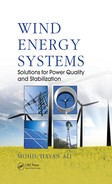Chapter 6
Wind Generator Grid Integration Issues
6.1 Introduction
Wind power is often described as an “intermittent”—and therefore unreliable—energy source. In fact, at the power system level wind energy does not start and stop at irregular intervals, so the term intermittent is misleading. The output of aggregated wind capacity is variable, just as the power system itself is inherently variable. Since wind power production is dependent on the wind, the output of a turbine and wind farm varies over time under the influence of meteorological fluctuations. These variations occur on all time scales: by seconds, minutes, hours, days, months, seasons, and years. Understanding and predicting these variations is essential for successfully integrating wind power into the power system and to use it most efficiently. Wind power as a generation source has specific characteristics, which include variability and geographical distribution. These raise challenges for the integration of large amounts of wind power into electricity grids. To integrate large amounts of wind power successfully, a number of issues need to be addressed, including design and operation of the power system, grid infrastructure issues, and grid connection of wind power. This chapter discusses grid integration issues in detail.
6.2 Transient Stability and Power Quality Problems
Let us consider a grid-connected wind generator system. During a transient fault in the power network, the rotor speed of the wind generator goes very high, active power output goes very low, and terminal voltage goes very low or collapses. The wind speed might be considered constant during a transient fault.
According to grid code requirements, the voltage level should not be below 85% of the rated voltage. Usually the wind generator is shut down during these emergency situations. Recent tradition is not to shut down the wind generator during a network fault but to keep it connected to the grid through appropriate power electronics control. In other words, the wind generators should have fault ride-through (FRT) capability. This clearly indicates that wind generator stabilization is necessary during network faults.
6.3 Variability of Wind Power
Electricity flows—both supply and demand—are inherently variable because power systems are influenced by a large number of planned and unplanned factors, but they have been designed to cope effectively with these variations through their configuration, control systems, and interconnection [1].
Examples of demand include changing weather, which makes people switch their heating, cooling, and lighting on and off, and the instant power that millions of consumers expect for TVs and computers every day. On the supply side, when a large power station, especially a nuclear reactor, goes offline whether by accident or planned shutdown, it does so instantaneously, causing an immediate loss of many hundreds of megawatts. By contrast, wind energy does not suddenly trip the system off. Variations are smoother because there are hundreds or thousands of units rather than a few large power stations, making it easier for the system operator to predict and manage changes in supply. Especially in large, interconnected grids, there is little overall impact if the wind stops blowing in one particular place.
Predictability is key in managing wind power’s variability, and significant advances have been made to improve forecasting methods. Today, wind power prediction is quite accurate for aggregated wind farms. Using increasingly sophisticated weather forecasts, wind power generation models, and statistical analysis, it is possible to predict generation from 5-minute to hourly intervals over time scales up to 72 hours in advance and for seasonal and annual periods. Using current tools, the forecast error for a single wind farm is between 10 and 20% of the power output for a forecast horizon of 36 hours. For regionally aggregated wind farms the forecast error is on the order of 10% for a day ahead and less than 5% for 1–4 hours in advance.
6.4 Power, Frequency, and Voltage Fluctuations Due to Random Wind Speed Variation
Due to random wind speed variation, wind generator output power, frequency, and terminal voltage fluctuate. In other words, power quality of the wind generator deteriorates. However, consumers need constant voltage and frequency. Thus, frequency, grid voltage, and transmission line power should be maintained constant. To this end, some control means are necessary [2–4].
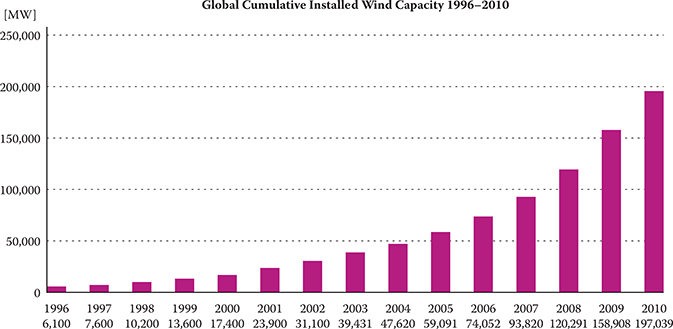
Figure 1.1 Cumulative installed capacity, 1996–2010.
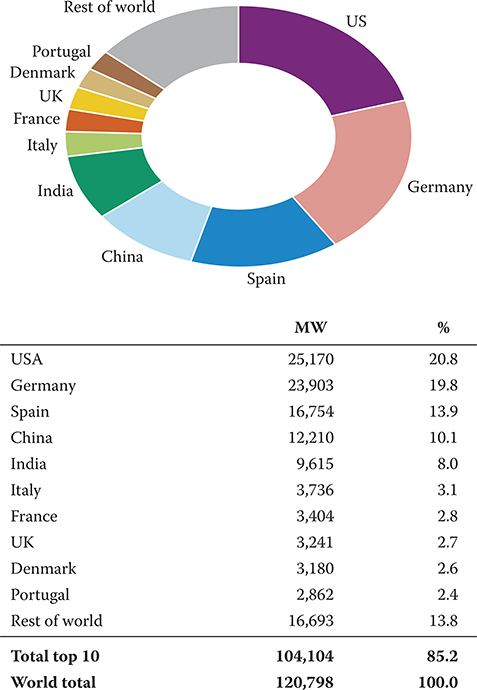
Figure 1.2 Total installed capacity 2008.

Figure 1.3 Top 10 cumulative capacity, December 2010.

Figure 1.4 Annual market forecast by region, 2010–2015.
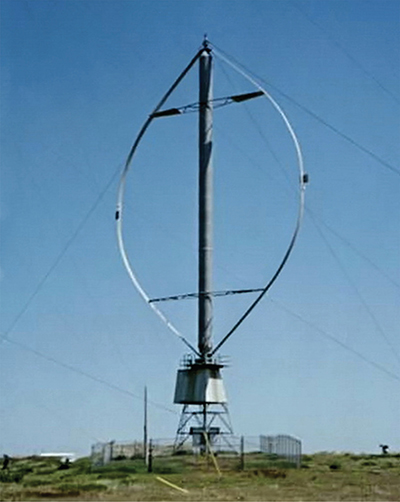
Figure 2.3 Vertical axis wind turbine.

Figure 2.4 Horizontal axis wind turbine.

Figure 2.5 Onshore wind farm.
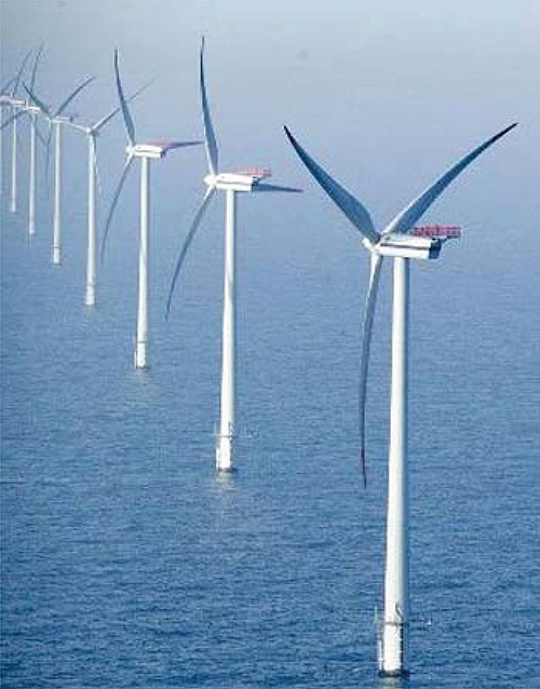
Figure 2.6 Offshore wind turbine.
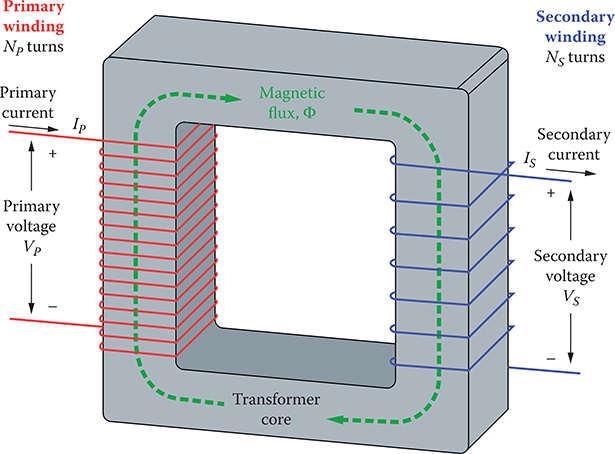
Figure 3.11 An ideal transformer.
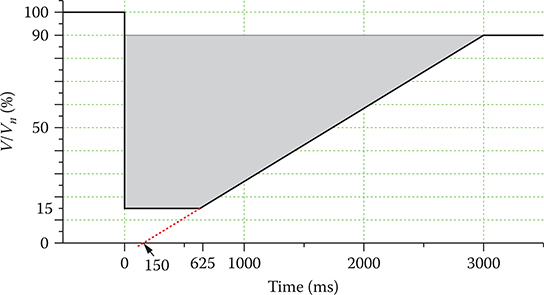
Figure 6.1 Typical low-voltage ride-through requirement—United States.
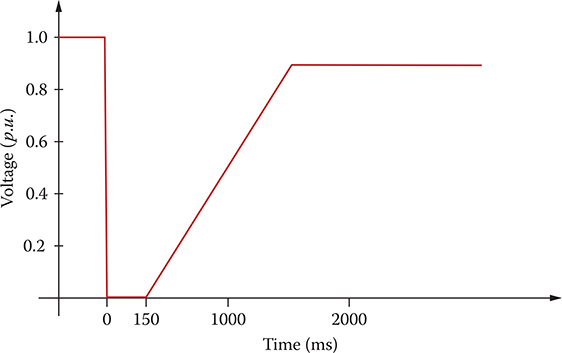
Figure 6.2 FRT requirements for wind turbines according to E.ON Netz.
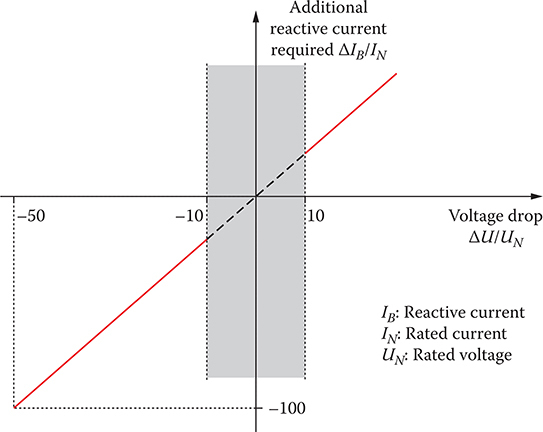
Figure 6.3 FRT requirements for wind turbines according to E.ON Netz.

Figure 7.5 Flow battery cell.
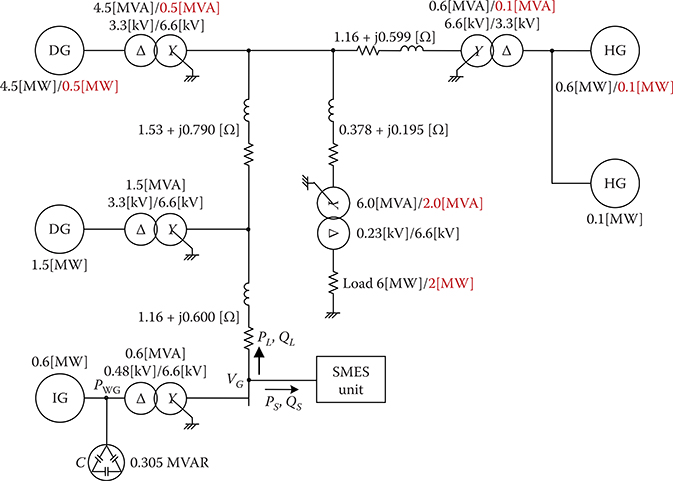
Figure 7.6 Power system model.
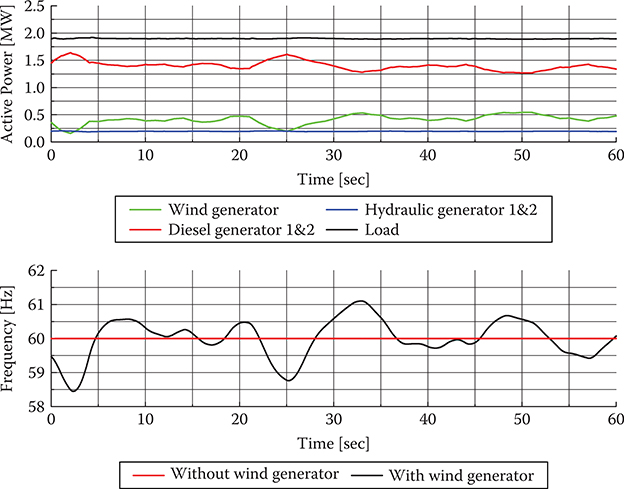
Figure 7.14 Responses of active power and system frequency without SMES (Load 2 MW). 59.4
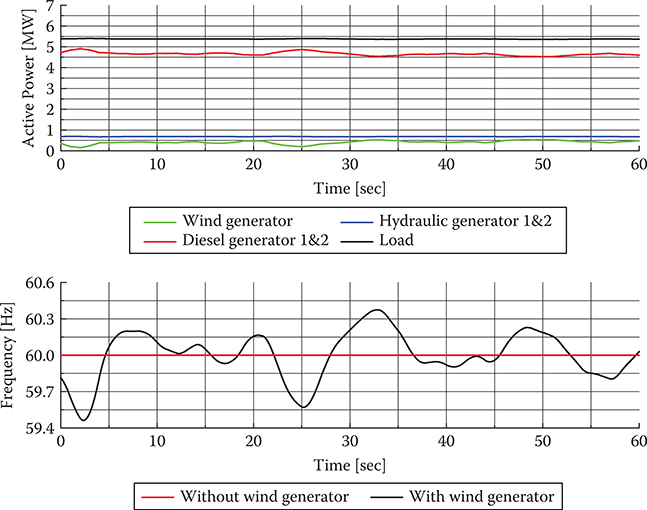
Figure 7.15 Responses of active power and system frequency without SMES (Load 6 MW).

Figure 7.16 Responses of active power and system frequency with 10 MJ SMES (Load 2 MW). 59.0

Figure 7.17 Responses of active power and system frequency with 10 MJ SMES (Load 6 MW).

Figure 7.18 Responses of active power and system frequency with different capacities of SMES (Load 2 MW).
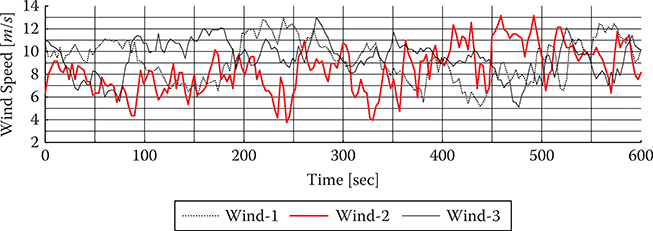
Figure 7.23 Wind speed
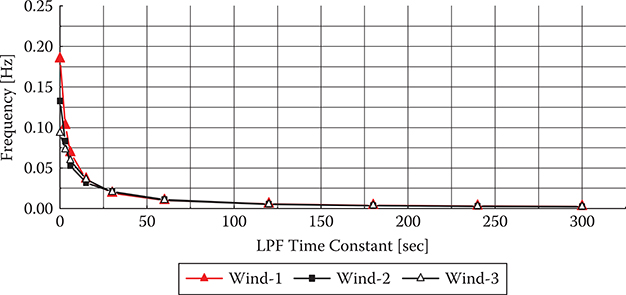
Figure 7.24 Maximum frequency fluctuation (WG capacity 10%).
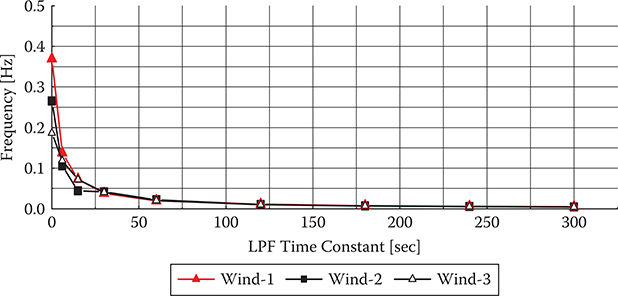
Figure 7.25 Maximum frequency fluctuation (WG capacity 20%).

Figure 7.26 Assumed SMES output standard deviation.
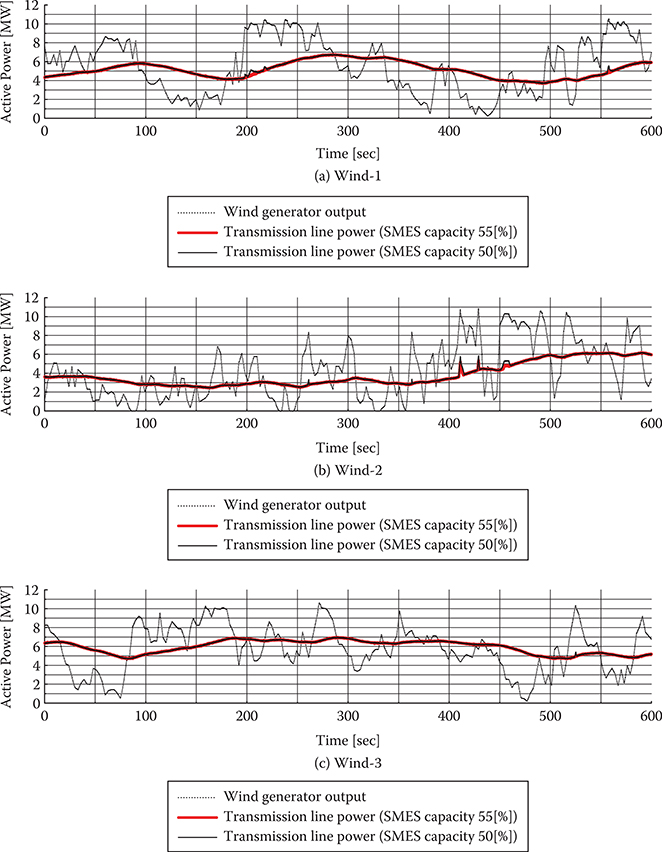
Figure 7.29 Wind generator output and transmission line power (WG capacity 10%).
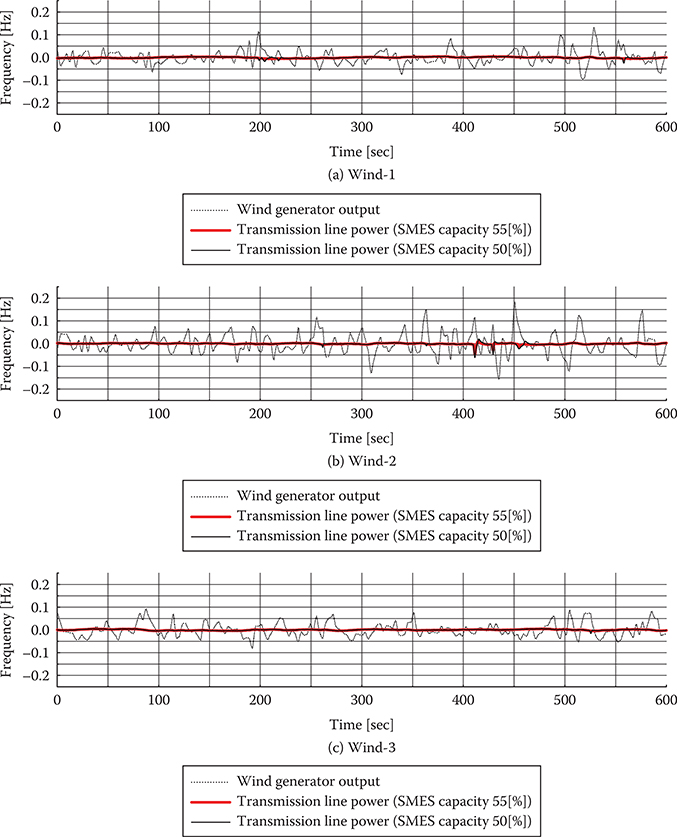
Figure 7.30 Frequency fluctuation (WG capacity 10%).
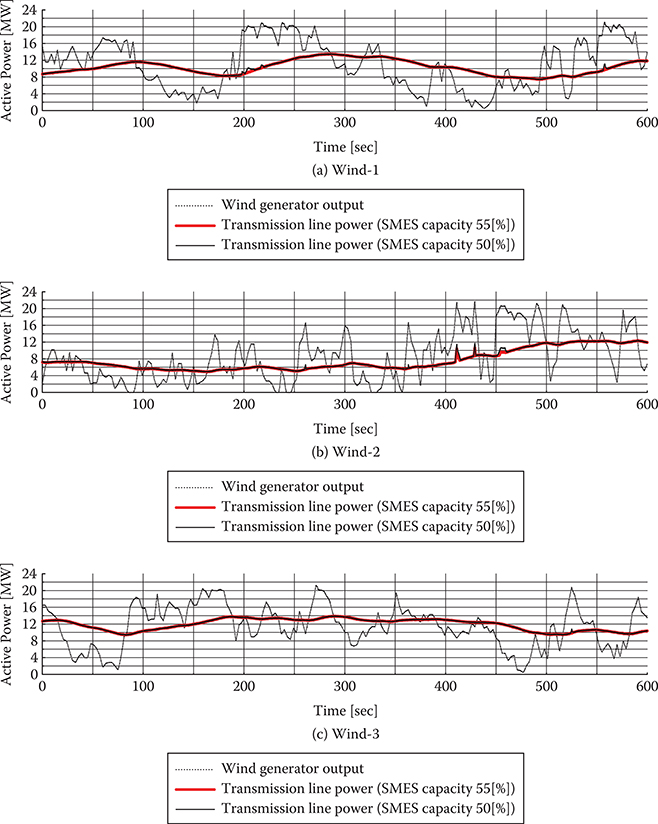
Figure 7.31 Wind generator output and transmission line power (WG capacity 20%).

Figure 7.32 Frequency fluctuation (WG capacity 20%).
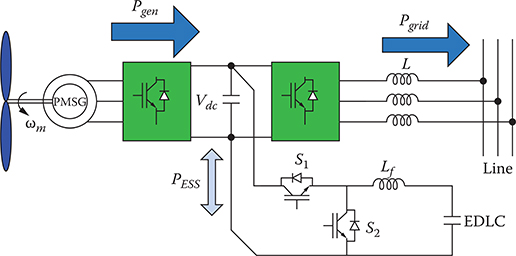
Figure 9.10 PMSG wind turbine system with ESS.
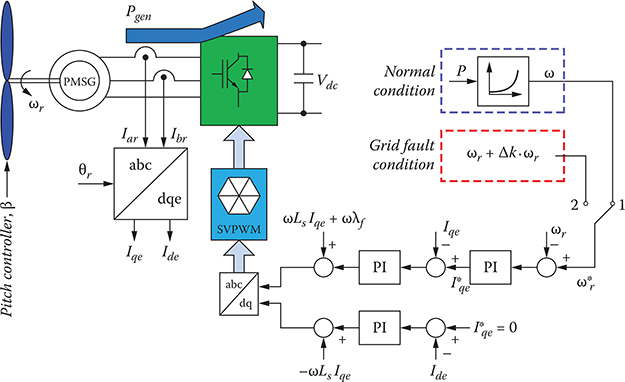
Figure 9.11 Control block diagram of PMSG.
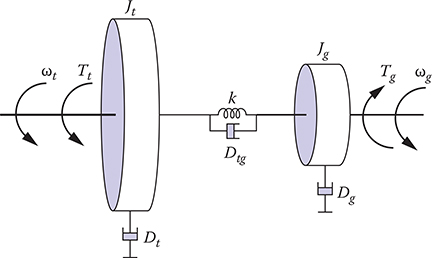
Figure 9.12 Two-mass model for drive train of wind turbine.
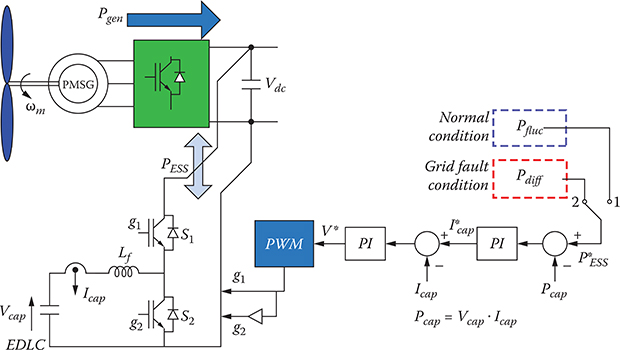
Figure 9.13 Control block diagram for ESS.
6.5 Grid Connection Requirements
With the rapid increase in installation of wind generators in the power system, it becomes necessary to require wind farms to behave as much as possible like conventional power plants to support the network voltage and frequency not only during steady-state conditions but also during grid disturbances. Due to this requirement, the utilities in many countries have recently established or are developing grid codes for operation and grid connection of wind farms. A grid code covers all material technical aspects relating to connections to, and the operation and use of, a country’s electricity transmission system. They lay down rules that define the ways generating stations connecting to the system must operate to maintain grid stability. The aim of these grid codes is to ensure that the continued growth of wind generation does not compromise the power quality as well as the security and reliability of the electric power system [1].
Technical requirements within grid codes vary from system to system, but the typical requirements for generators normally concern tolerance, control of active and reactive power, protective devices, and power quality. Specific requirements for wind power generation are changing as penetration increases and as wind power is assuming more and more power plant capabilities, that is, assuming active control and delivering grid support services.
Wind turbine manufacturers have to respond to these grid code requirements. Therefore, much research has been conducted to develop technologies and solutions to meet these requirements. This section discusses major grid code requirements for operation and grid connection of wind farms. The major requirements of typical grid codes for operation and grid connection of wind turbines are summarized as follows.
Voltage operating range: The wind turbines are required to operate within typical grid voltage variations.
Frequency operating range: The wind turbines are required to operate within typical grid frequency variations.
Active power control: Several grid codes require wind farms to provide active power control to ensure a stable frequency in the system and to prevent overloading of lines. Also, wind turbines are required to respond with a ramp rate in the desired range.
Frequency control: Several grid codes require wind farms to provide frequency regulation capability to help maintain the desired network frequency.
Voltage control: Grid codes require that individual wind turbines control their own terminal voltage to a constant value by means of an automatic voltage regulator.
Reactive power control: The wind farms are required to provide dynamic reactive power control capability to maintain the reactive power balance and the power factor in the desired range.
Low-voltage ride-through (LVRT): In the event of a voltage sag, the wind turbines are required to remain connected for a specific amount of time before being allowed to disconnect. In addition, some utilities require that the wind turbines help support grid voltage during faults.
High-voltage ride-through (HVRT): In the event that the voltage goes above its upper limit value, the wind turbines should be capable of staying online for a given length of time.
Power quality: Wind farms are required to provide the electric power with a desired quality, such as maintaining constant voltage or voltage fluctuations in the desired range or maintaining voltage– current harmonics in the desired range.
Wind farm modeling and verification: Some grid codes require wind farm owners and developers to provide models and system data to enable the system operator to investigate by simulations the interaction between the wind farm and the power system. They also require installation of monitoring equipment to verify the actual behavior of the wind farm during faults and to check the model.
Communications and external control: The wind farm operators are required to provide signals corresponding to a number of parameters important for the system operator to enable proper operation of the power system. Moreover, it must be possible to connect and disconnect the wind turbines remotely.
Grid code requirements and regulations vary considerably from country to country and from system to system. The grid codes in a certain region or country may cover only a part of these requirements. The differences in requirements, besides local traditional practices, are caused by different wind power penetrations and by different degrees of power network robustness. Figure 6.1 shows typical LVRT requirements in the United States. Interconnection requirements for wind energy connected to the transmission networks in the United States are applicable to wind farms larger than 20 MW and mainly cover the following three major technical topics:
LVRT capability: The wind farms are required to remain online during voltage disturbances up to specified time periods and associated voltage levels, as described by Figure 6.1. According to this LVRT specification, the wind turbines should remain connected to the grid and supply reactive power when the voltage at the point of connection falls in the gray area. In addition, wind farms must be able to operate continuously at 90% of the rated line voltage, measured at the high-voltage side of the wind plant substation transformers.
Power factor (reactive power) design criteria: The wind farms are required to maintain a power factor within the range of 0.95 leading to 0.95 lagging, measured at the high-voltage side of the substation transformers.
Supervisory control and data acquisition (SCADA) capability: The wind farms are required to have SCADA capability to transmit data and receive instructions from the transmission provider.
In response to increasing demands from the network operators—for example, to stay connected to the system during a fault event—the most recent wind turbine designs have been substantially improved. The majority of MW-size turbines being installed today are capable of meeting the most severe grid code requirements, with advanced features including fault ride-through capability. This enables them to assist in keeping the power system stable when disruptions occur. Modern wind farms are moving toward becoming wind energy power plants that can be actively controlled.
To illustrate how demanding the FRT requirements for wind turbines can be, the case of the German transmission system operator (TSO) E.ON Netz is presented. Figure 6.2 shows the requirement for the FRT process for wind turbines in the case of disturbance. According to the German code, wind turbines connected to the transmission system (which includes voltages levels of 220 kV and greater) must remain connected to the grid during short-circuit faults as long as the voltage at the point of common coupling (PCC), measured at the high-voltage level of the grid connected transformer, is above the continuous line defined in Figure 6.2. As can be observed, the turbines have to sustain the operation within the 150 ms after the fault appearance even if the voltage at the PCC decreases to zero [39].
In addition to the FRT capability, requirements regarding to voltage stability support are also imposed. Wind turbines must be able to provide at least 2% of the rated reactive current for each percent of voltage dip as shown in Figure 6.3. A reactive current of 100% of the rated current must be possible if necessary. The reactive current must be injected into the network within 20 ms after the fault detection on the low-voltage side of the connecting transformer.
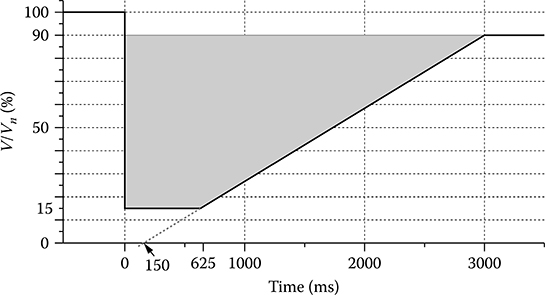
Figure 6.1 Typical low-voltage ride-through requirement—United States.
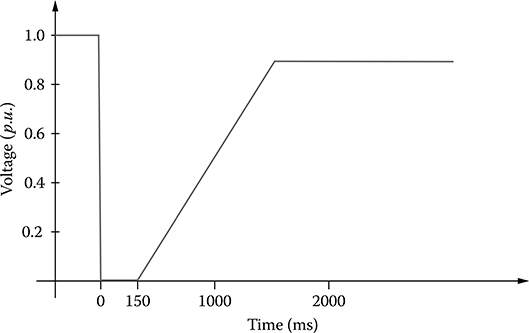
Figure 6.2 (See color insert.) FRT requirements for wind turbines according to E.ON Netz.
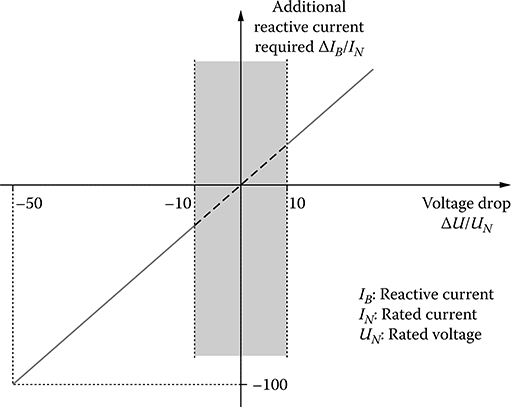
Figure 6.3 (See color insert.) FRT requirements for wind turbines according to E.ON Netz.
A dead band is also included around the reference voltage, in which the wind turbines can operate with power factor control. The requirements imposed by E.ON Netz in case of disturbance are technology oriented; that is, they address wind turbines manufacturer design requirements without explicitly defining power system security constraints or limits. Such required levels are well justified in power systems with high penetration levels of wind power (e.g., the northern area of Germany covered by E.ON Netz, with one of the highest penetration levels of wind power in the world) but are not necessary in power systems in an initial stage of wind power development. Requirements based on system security margins are an alternative to such grid codes.
Grid integration concerns have come to the fore in recent years as wind power penetration levels have increased in a number of countries as an issue that may impede the widespread deployment of wind power systems. Two of the strongest challenges to wind power’s future prospects are the problems of intermittency and grid reliability.
Electricity systems must supply power in close balance to demand. The average load varies in predictable daily and seasonal patterns, but there is an unpredictable component due to random load variations and unforeseen events. To compensate for these variations, additional generation capacity is needed to provide regulation or to set aside as reserves. Generators within an electrical system have varying operating characteristics: Some are base-load plants; others, such as hydro- or combustion turbines, are more agile in terms of response to fluctuations and startup times. There is an economic value above the energy produced to a generator that can provide these ancillary services. Introducing wind generation can increase the regulation burden and need for reserves, due to its natural intermittency. The impact of the wind plant variability may range from negligible to significant depending on the level of penetration and intermittency of the wind resource.
6.5.1 Islanding and Auto Reclosure
Critical situations can occur if a part of the utility network is islanded, and an integrated distributed generation (DG) unit is connected. This situation is commonly referred to as loss of mains (LOM) or loss of grid (LOG). When LOM occurs, neither the voltage nor the frequency is controlled by the utility supply. Normally, islanding is the consequence of a fault in the network. If an embedded generator continues its operation after the utility supply was disconnected, faults may not clear since the arc is still charged. Small embedded generators (or grid interfaces, respectively) are often not equipped with voltage control; therefore, the voltage magnitude of an islanded network is not kept between desired limits, and undefined voltage magnitudes may occur during island operation.
Another result of missing control might be frequency instability. Since real systems are never balanced exactly, the frequency will change due to active power unbalance. Uncontrolled frequency represents a high risk for machines and drives. Since arc faults normally clear after a short interruption of the supply, automatic (instantaneous) reclosure is a common relay feature. With a continuously operating generator in the network, two problems may arise when the utility network is automatically reconnected after a short interruption:
The fault may not have cleared since the arc was fed from the DG unit; therefore, instantaneous reclosure may not succeed.
In the islanded part of the grid, the frequency may have changed due to active power unbalance. Reclosing the switch would couple two asynchronously operating systems.
Extended dead time has to be regarded between the separation of the DG unit and the reconnection of the utility supply to make fault clearing possible. Common time settings of auto reclosure relays are between 100 and 1,000 ms. With DG in the network, the total time has to be prolonged. A recommendation is to maintain a reclosure interval of 1 sec or more for distribution feeders with embedded generators.
The only solution to this problem seems to be to disconnect the DG unit as soon as LOM occurred. Thus, it is necessary to detect islands quickly and reliably.
6.5.2 Other Issues
There are some other problems concerning the integration of DG besides those already mentioned. These issues are already known from experience with conventional power systems.
6.5.2.1 Ferroresonance
Ferroresonance can occur and damage customer equipment or transformers. For cable lines, where faults are normally permanent, fast-blowing fuses are used as overcurrent protection. Since the fuses in the three phases do not trigger simultaneously, it may happen that a transformer is connected via only two phases for a short time. Then, the capacitance of the cable is in series with the transformer inductance that could cause distorted or high voltages and currents due to resonance conditions.
6.5.2.2 Grounding
There are possible grounding problems due to multiple ground current paths. If a DG unit is connected via a grounded delta-wye transformer, earth faults on the utility line will cause ground currents in both directions—from the fault to the utility transformer as well as to the DG transformer. This is normally not considered in the distribution system ground fault coordination. The problem of loss of earth (LOE) for single-point grounded distribution systems is that whenever the utility earth connection is lost the whole system gets ungrounded.
6.6 Design and Operation of Power Systems
Power systems have always had to deal with sudden output variations from large power plants, and the procedures put in place can be applied to deal with variations in wind power production as well. The issue is therefore not one of variability in itself but how to predict and manage this variability and what tools can be used to improve efficiency.
Wind power as a generation source has specific characteristics including variability and geographical distribution. These raise challenges for the integration of large amounts of wind power into electricity grids. To integrate large amounts of wind power successfully, a number of issues need to be addressed, including design and operation of the power system, grid infrastructure issues, and grid connection of wind power.
Experience has shown that the established control methods and system reserves available for dealing with variable demand and supply are more than adequate for coping with the additional variability from wind energy up to penetration levels of around 20%, depending of the nature of the system in question. This 20% figure is merely indicative, and the reality will vary widely from system to system. The more flexible a power system is in terms of responding to variations on both the demand and the supply side, the easier it to integrate variable-generation sources such as wind energy. In practice, such flexible systems, which tend to have higher levels of hydropower and gas generation in their power mix, will find that significantly higher levels of wind power can be integrated without major system changes.
Within Europe, Denmark already gets 21% of its gross electricity demand from the wind, Spain almost 12%, Portugal 9%, Ireland 8%, and Germany 7%. Some regions achieve much higher penetrations. In the western half of Denmark, for example, more than 100% of demand is sometimes met by wind power. Grid operators in a number of European countries, including Spain and Portugal, have now introduced central control centers that can monitor and manage efficiently the entire national fleet of wind turbines.
The present levels of wind power connected to electricity systems already show that it is feasible to integrate the technology to a significant extent.
Another frequent misunderstanding concerning wind power relates to the amount of “backup” generation capacity required, as the inherent variability of wind power needs to be balanced in a system.
Wind power does indeed have an impact on the other generation plants in a given power system, the magnitude of which will depend on the power system size, generation mix, load variations, demand size management, and degree of grid interconnection. However, large power systems can take advantage of the natural diversity of variable sources. They have flexible mechanisms to follow the varying load and plant outages that cannot always be accurately predicted.
6.7 Storage Options
There is increasing interest in both large-scale storage implemented at transmission level and smaller-scale dedicated storage embedded in distribution networks. The range of storage technologies is potentially wide. For large-scale storage, pumped hydro-accumulation storage (PAC) is the most common and known technology and can also be done underground. Another technology option available on a large scale is compressed air energy storage (CAES).
On a decentralized scale, storage options include flywheels, batteries (possibly in combination with electric vehicles), fuel cells, electrolysis, and super-capacitors. Furthermore, an attractive solution consists of the installation of heat boilers at selected combined heat and power locations (CHPs) order to increase the operational flexibility of these units.
It should be pointed out that storage leads to energy losses and is not necessarily an efficient option for managing wind farm output. If a country does not have favorable geographical conditions for hydroreservoirs, storage is not an attractive solution because of the poor economics at moderate wind power penetration levels (up to 20%). In any case, the use of storage to balance variations at wind plant level is neither necessary nor economic.
6.8 Grid Infrastructure
The specific nature of wind power as a distributed and variable-generation source requires specific infrastructure investments and the implementation of new technology and grid management concepts. High levels of wind energy in a system can impact grid stability, congestion management, transmission efficiency, and transmission adequacy.
In many parts of the world, substantial upgrades of grid infrastructure will be required to allow for significant levels of grid integration. Great improvements can be achieved by network optimization and other “soft” measures, but an increase in transmission capacity and construction of new transmission lines will also be needed. At the same time, adequate and fair procedures for grid access for wind power need to be developed and implemented, even in areas where grid capacity is limited. However, the expansion of wind power is not the only driver. Extensions and reinforcements are needed to accommodate whichever power generation technology is chosen to meet a rapidly growing electricity demand.
6.9 Wind Power’s Contribution to System Adequacy
The capacity credit of wind energy expresses how much “conventional” power generation capacity can be avoided or replaced by wind energy. For low wind energy penetration levels, the capacity credit will therefore be close to the average wind power production, which depends on the capacity factors on each individual site (normally 20–35% of rated capacity). With increasing penetration levels of wind power, its relative capacity credit will decrease, which means that a new wind plant on a system with high wind power penetration will replace less conventional power than the first plants in the system. Aggregated wind plants over larger geographical areas are best suited to take full advantage of the firm contribution of wind power in a power system.
6.10 Chapter Summary
This chapter provides a thorough description of the grid integration issues of wind generator systems. Wind power as a generation source has specific characteristics, which include variability and geographical distribution. These raise challenges for the integration of large amounts of wind power into electricity grids. To integrate large amounts of wind power successfully, a number of issues need to be addressed, including design and operation of the power system, grid infrastructure issues, and grid connection of wind power, power quality, and transient stability enhancement of wind generator systems. This chapter focuses on all of these phenomena.
References
1. Global Wind Energy Council (GWEC), http://www.gwec.net/
2. M. H. Ali and B. Wu, “Comparison of stabilization methods for fixed-speed wind generator systems,” IEEE Transactions on Power Delivery, vol. 25, no. 1, pp. 323–331, January 2010.
3. M. H. Ali, J. Tamura, and B. Wu, “SMES strategy to minimize frequency fluctuations of wind generator system,” Proceedings of the 34th Annual Conference of the IEEE Industrial Electronics Society (IECON 2008), November 10–13, 2008, Orlando, FL, pp. 3382–3387.
4. M. H. Ali, T. Murata, and J. Tamura, “Minimization of fluctuations of line power and terminal voltage of wind generator by fuzzy logic-controlled SMES,” International Review of Electrical Engineering (IREE), vol. 1, no. 4, pp. 559–566, October 2006.
5. M. Abbes, J. Belhadj, and A. B. Bennani, “Design and control of a direct drive wind turbine equipped with multilevel converters,” Renewable Energy, vol. 35, pp. 936–945, 2010.
6. O. Abdel-Baqi and A. Nasiri, “A dynamic LVRT solution for doubly fed induction generators,” IEEE Transactions on Power Electronics, vol. 25, pp. 193–196, 2010.
7. Y. M. Atwa, E. F. El-Saadany, and A. C. Guise, “Supply adequacy assessment of distribution system including wind based DG during different modes of operation,” IEEE Transactions on Power System, vol. 25, pp. 78–86, 2010.
8. H. Banakar and B. T. Ooi, “Clustering of wind farms and its sizing impact,” IEEE Transactions on Energy Conversion, vol. 24, pp. 935–942, 2009.
9. L. R. Chang-Chien and Y. C. Yin, “Strategies for operating wind power in a similar manner of conventional power plant,” IEEE Transactions on Energy Conversion, vol. 24, pp. 926–934, 2009.
10. S. Z. Chen, N. C. Cheung, K. C. Wong, and J. Wu, “Grid synchronization of doubly-fed induction generator using integral variable structure control,” IEEE Transactions on Energy Conversion, vol. 24, pp. 875–883, 2009.
11. R. Doherty, A. Mullane, G. Nolan, D. J. Burke, A. Bryson, and M. O’Malley, “An assessment of the impact of wind generation on system frequency control,” IEEE Transactions on Power Systems, vol. 25, pp. 452–460, 2010.
12. J. B. Hu and Y. K. He, “Reinforced control and operation of DFIG based wind-power-generation system under unbalanced grid voltage conditions,” IEEE Transactions on Energy Conversion, vol. 24, pp. 905–915, 2009.
13. M. V. Kazemi, A. S. Yazdankhah, and H. M. Kojabadi, “Direct power control of DFIG based on discrete space vector modulation,” Renewable Energy, vol. 35, pp. 1033–1042, 2010.
14. A. Kusiak and Z. Song, “Design of wind farm layout for maximum wind energy capture,” Renewable Energy, vol. 35, pp. 685–694, 2010.
15. A. Mendonca and J. A. P. Lopes, “Robust tuning of power system stabilizers to install in wind energy conversion systems,” IET Renewable Power Generation, vol. 3, pp. 465–475, 2009.
16. Y. Mishra, S. Mishra, F. X. Li, Z. Y. Dong, and R. C. Bansal, “Small-signal stability analysis of a DFIG-based wind power system under different modes of operation,” IEEE Transactions on Energy Conversion, vol. 24, pp. 972–982, 2009.
17. B. C. Ni and C. Sourkounis, “Influence of wind-energy-converter control methods on the output frequency components,” IEEE Transactions on Industry Applications, vol. 45, pp. 2116–2122, 2009.
18. S. Nishikata and F. Tatsuta, “A new interconnecting method for wind turbine/generators in a wind farm and basic performances of the integrated system,” IEEE Transactions on Industrial Electronics, vol. 57, pp. 468–475, 2010.
19. L. F. Ochoa, C. J. Dent, and G. P. Harrison, “Distribution network capacity assessment: Variable DG and active networks,” IEEE Transactions on Power Systems, vol. 25, pp. 87–95, 2010.
20. G. Ramtharan, A. Arulampalam, J. B. Ekanayake, F. M. Hughes, and N. Jenkins, “Fault ride through of fully rated converter wind turbines with AC and DC transmission systems,” IET Renewable Power Generation, vol. 3, pp. 426–438, 2009.
21. Y. Sozer and D. A. Torrey, “Modeling and control of utility interactive inverters,” IEEE Transactions on Power Electronics, vol. 24, pp. 2475–2483, 2009.
22. M. Tazil, V. Kumar, R. C. Bansal, S. Kong, Z. Y. Dong, and W. Freitas, “Three-phase doubly fed induction generators: An overview,” IET Electric Power Applications, vol. 4, pp. 75–89, 2010.
23. J. Usaola, “Probabilistic load flow in systems with wind generation,” IET Generation Transmission & Distribution, vol. 3, pp. 1031–1041, 2009.
24. E. Vittal, M. O’Malley, and A. Keane, “A steady-state voltage stability analysis of power systems with high penetrations of wind,” IEEE Transactions on Power Systems, vol. 25, pp. 433–442, 2010.
25. Y. Wang and L. Xu, “Coordinated control of DFIG and FSIG based wind farms under unbalanced grid conditions,” IEEE Transactions on Power Delivery, vol. 25, pp. 367–377, 2010.
26. S. Zhang, K. J. Tseng, and S. S. Choi, “Statistical voltage quality assessment method for grids with wind power generation,” IET Renewable Power Generation, vol. 4, pp. 43–54, 2010.
27. P. Zhou, Y. K. He, and D. Sun, “Improved direct power control of a DFIG-based wind turbine during network unbalance,” IEEE Transactions on Power Electronics, vol. 24, pp. 2465–2474, 2009.
28. Y. M. Atwa, E. F. El-Saadany, M. M. A. Salama, and R. Seethapathy, “Optimal renewable resources mix for distribution system energy loss minimization,” IEEE Transactions on Power Systems, vol. 25, pp. 360–370, 2010.
29. T. Ayhan and H. Al Madani, “Feasibilty study of renewable energy powered seawater desalination technology using natural vacuum technique,” Renewable Energy, vol. 35, pp. 506–514, 2010.
30. J. L. Bernal-Agustin and R. Dufo-Lopez, “Techno-economical optimization of the production of hydrogen from PV-wind systems connected to the electrical grid,” Renewable Energy, vol. 35, pp. 747–758, 2010.
31. H. C. Chiang, T. T. Ma, Y. H. Cheng, J. M. Chang, and W. N. Chang., “Design and implementation of a hybrid regenerative power system combining grid-tie and uninterruptible power supply functions,” IET Renewable Power Generation, vol. 4, pp. 85–99, 2010.
32. P. D. Friedman, “Evaluating economic uncertainty of municipal wind turbine projects,” Renewable Energy, vol. 35, pp. 484–489, 2010.
33. C. H. Liu, K. T. Chau, and X. D. Zhang, “An efficient wind photovoltaic hybrid generation system using doubly excited permanent-magnet brushless machine,” IEEE Transactions on Industrial Electronics, vol. 57, pp. 831– 839, 2010.
34. M. S. Lu, C. L. Chang, W. J. Lee, and L. Wang, “Combining the wind power generation system with energy storage equipment,” IEEE Transactions on Industry Applications, vol. 45, pp. 2109–2115, 2009.
35. J. M. Morales, A. J. Conejo, and J. Perez-Ruiz, “Short-term trading for a wind power producer,” IEEE Transactions on Power Systems, vol. 25, pp. 554–564, 2010.
36. R. Sebastian and R. P. Alzola, “Effective active power control of a high penetration wind diesel system with a Ni-Cd battery energy storage,” Renewable Energy, vol. 35, pp. 952–965, 2010.
37. R. K. Varma, V. Khadkikar, and R. Seethapathy, “Nighttime application of PV solar farm as STATCOM to regulate grid voltage,” IEEE Transactions on Energy Conversion, vol. 24, pp. 983–985, 2009.
38. D. L. Yao, S. S. Choi, K. J. Tseng, and T. T. Lie, “A statistical approach to the design of a dispatchable wind power-battery energy storage system,” IEEE Transactions on Energy Conversion, vol. 24, pp. 916–925, 2009.
39. C. Rahmann, H.-J. Haubrich, A. Moser, R. Palma-Behnke, L. Vargas, and M. B. C. Salles, “Justified Fault-Ride-Through Requirements for Wind Turbines in Power Systems,” IEEE Trans. Power Systems, vol. 26, no. 30, pp. 1555–1563, August 2011.
